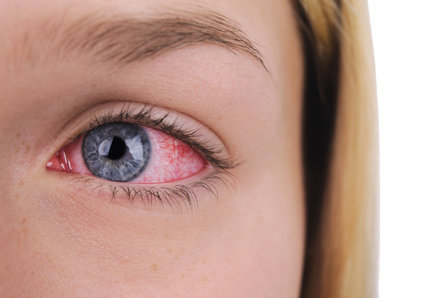The State of Drug or Alcohol Abuse Among American Teens

Patterns of youthful drug use are always changing. Sometimes the drugs on the illicit market change and sometimes the frequency or method of use changes. So that parents know what to watch for, it’s a good idea for them keep to up with this constantly shifting world.
From the annual survey of 8th, 10th and 12th-grade students called the Monitoring the Future survey, we can get an assessment of how this drug use has been changing recently. This article’s information is taken from the 2020 publication of this survey. In this article, we will take a look at the drugs that are most commonly being abused by our youth.
One of the most important facts to realize is that all the substances on these lists are addictive. A single indulgence can turn into a weekend habit which can turn into addiction.
Some of these drugs can kill at any time. When a young person indulges in alcohol, inhalants or pills, in particular, they lack any experience using these drugs that might spare them from the worst of the dangers.
Marijuana
Marijuana (cannabis) may be consumed in several different ways.
- Smoking hand-rolled cigarettes called joints
- Smoking the leaf or flower in small pipes or elaborate glass devices called bongs
- Smoking concentrated products
- Consuming edible products such as gummy bears, candies, cookies and much more
- Consuming capsules or oils
- Vaping cannabis liquids or oils in an electronic device
- Placing sprays or films under the tongue
The percentages of students who had used marijuana in any form in the prior year were as follows:
- 8th grade: 11.4%
- 10th grade: 28%
- 12th grade: 35.2%
While these numbers are relatively stable, the number of 12th-grade students using marijuana daily has risen for two years in a row. In 2020, one in fourteen high school seniors was a daily or near-daily user.

The numbers for vaping marijuana are lower than the numbers above, but they have increased greatly in recent years. In the two years between 2017 and 2019, vaping marijuana doubled or tripled in all three grades.
In 2017, for example, 4.9% of 12th-grade students said they had vaped marijuana in the prior month. By 2019, this number had risen to 14%. By 2020, past-month vaping had declined very slightly for all three grades.
Past-year numbers for vaping are much higher:
- 8th grade: 8.1%
- 10th grade: 19.1%
- 12th grade: 22.1%

Signs of marijuana use to watch for:
- Dry cough
- Red eyes
- Dry mouth
- Increased appetite
- Irrational laughter
- Increased talkativeness
- Rolling papers
- Glass pipes
- Herbal material
Additional vaped marijuana signs:
- Whistling in the chest and wheezing
- Asthma symptoms
- Electronic smoking devices
- Small cartridges filled with amber or clear oil
Note: Vaping marijuana may not produce the skunky smell of leaf marijuana. There may just be a sweetish smell or no smell at all.
Alcohol
Accompanying alcohol consumption is, of course, drunkenness, but also falls, burns, drownings, traffic accidents and alcohol poisoning.
Past year alcohol use:
- 8th grade: 20.5%
- 10th grade: 40.7%
- 12th grade: 55.3%
Do these numbers seem high? Compare them to the numbers from 1991:
- 8th grade: 54%
- 10th grade: 72.3%
- 12th grade: 77.7%
Nearly 42% of 12th-grade students surveyed say they have been drunk at some point in their lives.
Signs to watch for:
- Finding alcohol or empty bottles in child’s room or backpack
- Smelling alcohol on their breath
- Poor memory
- Inability to concentrate
- Bloodshot eyes
- Lack of coordination
- Slurred speech
Cough Medicine
Cough medicine is accessible from either medicine chests in homes or pharmacy departments and stores. Youth who are under 18 may shoplift this item if they can. However, some drugstores now place this product behind the register to prevent theft. And, of course, it can be purchased quite easily online.
Cough medicines are abused by taking far more of the substance than recommended. Pay particular attention to any records of purchase or empty medicine bottles with “DM” in the product name. This indicates that the product contains dextromethorphan, the intoxicant that cough medicine abusers are looking for.
It may seem odd that the highest rate of misuse of cough medicine is among 8th-grade students. These youth do not have easy access to illicit drugs but they can get their hands on cough medicine. By the time they get to 10th and 12th grade, they can leave cough medicine behind as they gain access to students who can sell them marijuana, alcohol, stimulants or other drugs.
Abuse of cough medicine in the past year:
- 8th grade: 4.6%
- 10th grade: 3.3%
- 12th grade: 3.2%

Signs to watch for:
- Excitability
- Stomach pain
- Lethargy
- Vision changes
- Sweating
- Poor motor control
- Slurred speech
- Empty containers of cough medicine
- Purchase records for cough medicine
High doses of cough medicine can produce these effects:
- Hallucinations
- Panic
- Paranoia
- Aggression
- Anxiety
- Slowed and weak breathing
- Coma
Stimulants
The stimulants that are the most readily available to youth are drugs often prescribed for problems studying or focusing on tasks. Here are the brand names of frequently prescribed stimulants followed by the drugs’ generic descriptions.
- Adderall (dextroamphetamine and amphetamine)
- Ritalin, Daytrana, Metadate, Concerta (methylphenidate)
- Dexedrine, ProCentra or Zenzedi (dextroamphetamine)
- Focalin (dexmethylphenidate)
- Evekeo (amphetamine sulfate)
- Vyvanse (lisdexamfetamine)
How many students said they had abused any type of amphetamine product in the past year?
- 8th grade: 5.3%
- 10th grade: 4.3%
- 12th grade: 4.3%
More than 4% of high school seniors said they had misused Adderall and 1.7% said they had misused Ritalin in the past year.

Signs to watch for:
- Euphoria
- Faster breathing
- Faster heart rate
- Staying up long hours
- Insomnia
- Studying intensively when this is not normal
- Reduced appetite
These drugs usually come in tablet, capsule or caplet form. When abused over time (even a short period), these drugs can trigger anger, paranoia and even psychosis.
Inhalants
Every household has substances that can be misused to get high. This makes it virtually impossible for parents to eliminate every abusable substance. Therefore, it is vital for parents to know the signs of inhalant abuse, especially with younger teens or pre-teens in the home.
What inhalants can be found in homes?
- Spray paints
- Propane
- Air fresheners
- Hairspray
- Deodorants
- Cooking sprays
- Whipped cream containers
- Gas mileage boosters
- Butane lighters
- Refrigerants
- Leather cleaner
- Spot remover
- Cleaning solutions
- Computer cleaners (pressurized air)
- Correction fluid
- Paint thinner
- Markers
- Gasoline
Abuse of inhalants can be fatal. One study found that the greatest number of inhalant abuse deaths were caused by gasoline, air fresheners or propane/butane.
Like with cough medicine, the percentage of use is higher among 8th-grade students than older students, probably because these are the only substances readily available to younger children. Here are the percentages of students who abused these substances in the prior year:
- 8th grade: 6.1%
- 10th grade: 2.9%
- 12th grade: 1.1%
Signs to watch for: Immediate effects
- Drunk appearance
- Disorientation
- Lack of inhibitions
- Hallucinations
- Drowsiness
- Slurred speech
- Lack of coordination
- Irritability
- Loss of sensation
- Stupor
- Headache
- Nausea
- No appetite
- Chemical smells
- Paint or chemicals on rags, clothes or bags
- Empty chemical or spray containers
The Most Vital List of All
It’s a hard truth that when youth start using drugs or alcohol, they keep it a secret. And when they feel challenged by subtle pressure from friends to “join in,” they seldom ask their parents how they should handle it. This whole side of their lives stays hidden which is, of course, unfortunate and can result in tragedy. If there is a serious problem brewing, parents often don’t know about it and therefore can’t fix it.
The fact is that parents must be alert to changes in their children—of any age—that provide clues that something is seriously wrong. Of course, the causes of these changes could vary from drug or alcohol use to failures in school, traumatic breakups or even sexual abuse that’s out of sight of the parents.

Here are the signs that could indicate drug or alcohol use. This may be the most vital “what to watch for” list of all.
- Chronic irritability or bad temper
- Defensiveness
- Secrecy
- Locking themselves in their room
- Refusing to follow family rules
- Missing family events
- Changing their circle of friends
- Abandoning hobbies or educational goals
- Poor grooming or hygiene
- Sloppy dress
- Apathy and disinterest
- Poor health
- Dropping grades
- Change in sleeping habits
The key here is this: If you see these signs, find out what has changed. Whether it’s drugs or some other cause, the only safety is in continuing to make your own investigation until you find out what is creating this negative change. Whatever the cause is, you can plan out a solution once you discover the truth.
Sources:
- http://www.monitoringthefuture.org//pubs/monographs/mtf-overview2020.pdf
- https://www.samhsa.gov/talk-they-hear-you/parent-resources/how-tell-if-your-child-drinking-alcohol
- https://www.drugabuse.gov/drug-topics/related-topics/trends-statistics/infographics/monitoring-future-2020-survey-results
- https://www.drugabuse.gov/publications/drugfacts/over-counter-medicines
- https://www.drugabuse.gov/publications/drugfacts/prescription-stimulants
- https://www.drugabuse.gov/publications/research-reports/inhalants/what-are-inhalants
- https://www.ncbi.nlm.nih.gov/pmc/articles/PMC2948777/
- https://www.drugabuse.gov/publications/research-reports/inhalants/h
- w-can-inhalant-abuse-be-recognized
- https://labblog.uofmhealth.org/rounds/vaping-marijuana-associated-more-symptoms-of-lung-damage-than-vaping-or-smoking-nicotine


 ®
®